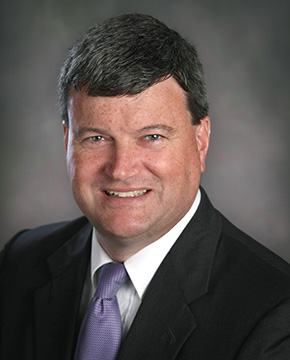Tom Beilstein, CFA
Co-CIO, Bill Few Associates, Inc.
The first quarter of 2018 saw the return of volatility as market participants weighed the good news versus the bad news. The S&P 500 started the year off on a positive note as investors digested the possible benefits from corporate and individual tax cuts, rallying 7.6% through January 26. Then came a strong jobs report that sparked concerns the economy was growing too fast. A heated economy would eventually lead to higher inflation. Higher inflation would cause the Fed to raise interest rates at a faster pace which could choke off economic growth. This led to the first 10% correction in more than two years as the index fell 10.2% through February 8. In time, the panic subsided and the market resumed its uptrend, rising 8.2% through March 9. All was well until the talk of tariffs. Worries that tariffs on steel and aluminum would lead to a trade war caused a 5.5% sell-off that lasted through the end of the quarter.
Whew! If that seemed like a lot to take in, it was. In a normal year, the stock market has, on average, five pullbacks of 5% and one correction of 10%. In the first quarter, we experienced four 5% pullbacks and one 10% correction. In other words, we had a year’s worth of volatility in three months. Yet with all that volatility, we ended the quarter close to where we started. After the dust settled on March 31, the S&P 500 stood -0.8% lower than it started the year. It certainly felt worse than that. As mentioned, we had a year’s worth of volatility in the first quarter. Last year, we had no volatility. We did not have any 5% pullbacks, let alone a 10% correction. The market went up almost every day. What we just experienced in the first quarter was much more normal than what happened in 2017.
The rocky ride to nowhere was not limited to just the S&P 500. Small-cap stocks, as measured by the Russell 2000, were up 4.8%, fell -8.9%, only to finish the quarter down -0.1%. International stocks, as measured by the EAFE Index, were up 6.5%, fell -7.4%, only to end down -1.5%. Fixed income did not provide a safe haven either, as the Bloomberg Barclays U.S. Aggregate Bond Index fell -1.5%. The Fed raised short-term interest rates 0.25% during the quarter. Longer-term rates went up even more as the 10-year Treasury bond went from 2.40% to 2.73% during the quarter. Higher rates are good for savings accounts, but not so much for bond holders. When rates go up, prices of existing bonds go down, which was the reason for the negative return.
So where do we go from here? It seems likely that heightened volatility will continue. Tension remains between the positives and negatives. This will undoubtedly create more market volatility. Among the many positives are a strong global economy, U.S. tax cuts, low interest rates, low inflation and low unemployment. However, there also exist numerous possible headwinds including the Fed raising interest rates, an aging bull market and economic expansion, and a possible trade war with China. There is a lot to soak in. The best news is that, at this time, there is little concern about the global economy slipping into a recession. Typically, when the economy is not in a recession, pullbacks are relatively shallow and short in duration. The pullbacks we experienced in the first quarter followed this pattern. We will closely monitor the prospects of recession and make recommendations when appropriate. But until that time, get used to the rocky ride.
Tom Beilstein, CFA
Co-CIO, Bill Few Associates, Inc.
All data from Morningstar


